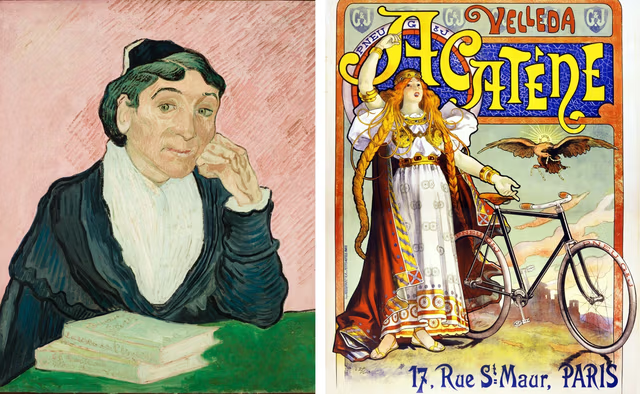By Martin Bailey | Adventures with Van Gogh
Adventures with Van Gogh is a weekly blog by Martin Bailey, our long-standing correspondent and expert on the artist. Published every Friday, his stories range from newsy items about this most intriguing artist to scholarly pieces based on his own meticulous investigations and discoveries.
In 1899, Henri Matisse, a 29-year-old struggling artist, came across the work of Vincent van Gogh at Ambroise Vollard’s gallery in Paris. It was here that Matisse fell in love with L’Arlesienne, a captivating portrait of a woman from Arles, painted against a pink background. The painting was being offered for just 150 francs—then equivalent to around £6—but even that amount was a challenge for the impoverished Matisse to gather.
A Missed Opportunity
Years later, Matisse vividly recalled the moment he encountered Van Gogh’s work at Vollard’s:
“At Vollard’s there was a portrait by Van Gogh of a woman from Arles on a pink background. These days it’s famous.”
Art historians believe this was likely the painting of L’Arlesienne (April 1890), which now resides in the Museu de Arte de São Paulo. However, there’s a possibility that it could have been a similar version now housed in the Galleria Nazionale d’Arte Moderna e Contemporanea in Rome.
Asking His Brother for Help
Desperate to acquire the painting, Matisse wrote to his younger brother, Auguste, asking for financial assistance. In his letter, he enthusiastically urged his brother:
“If you want to use your savings to buy a corker of a painting, I’ve found one. It’s cheap and it’s very beautiful.”
But Auguste had other plans. In a reply that would later become part of art lore, he explained that he had already spent his savings on an Acatène, one of the latest and most coveted bicycles of the time. The bicycle had cost him around 500 francs, a significant sum in those days.
A Price Beyond Reach
Undeterred, Matisse tried to gather the funds himself and managed to scrape together the 150 francs he needed. But when he returned to Vollard’s gallery six weeks later, he was in for a shock. The canny dealer had raised the price to 450 francs, a sum far beyond Matisse’s means.
Vollard, known for his shrewd business instincts, explained the price increase to the disappointed artist:
“A picture doesn’t have a fixed value. Say I’ve a picture here and I normally ask 500 francs for it. Someone like Monsieur de Camondo [a wealthy collector] arrives and takes a passing interest in it. My picture immediately goes up from 500 to 5,000 francs.”
A Small Consolation: A Van Gogh Drawing
Although Matisse missed out on acquiring L’Arlesienne, he did manage to own a Van Gogh work—albeit a drawing.
In the summer of 1897, Matisse spent time on the Breton island of Belle-Île, where he met John Russell, an Australian artist who had been close friends with Van Gogh a decade earlier in Paris. Van Gogh had sent Russell a series of finely executed pen-and-ink copies of some of his paintings from Arles.
Matisse was so captivated by these drawings that Russell, recognizing his passion, generously gifted him one—Haystacks (July-August 1888).
Van Gogh’s Influence on Matisse’s Art
While Matisse never acquired a Van Gogh painting, his exposure to Van Gogh’s work had a profound influence on his artistic journey. The intensity of Van Gogh’s colors and the expressive power of his brushwork left an indelible mark on Matisse. In the years that followed, Matisse would emerge as a leading figure in the Fauvist movement, known for its bold colors and wild brushstrokes—earning its artists the nickname “Les Fauves” (The Wild Beasts).
Van Gogh’s daring use of color and emotional intensity undoubtedly helped shape Matisse’s development, driving him to push the boundaries of artistic expression.
A Missed Painting, A Lasting Influence
Though Matisse never acquired L’Arlesienne, the episode remains a fascinating glimpse into the early struggles of a young artist who would go on to revolutionize the art world. Even without owning a Van Gogh painting, Matisse absorbed the essence of Van Gogh’s genius—an influence that echoed throughout his remarkable career.
As Matisse’s own legacy unfolded, one can’t help but wonder how different things might have been had he secured that painting instead of his brother buying a bicycle.



0 Comments